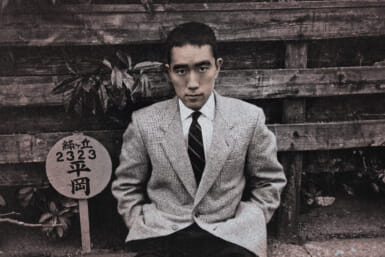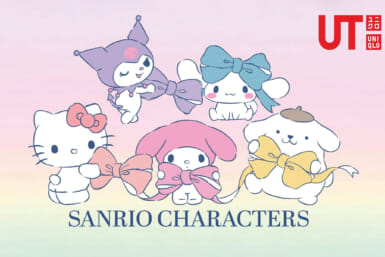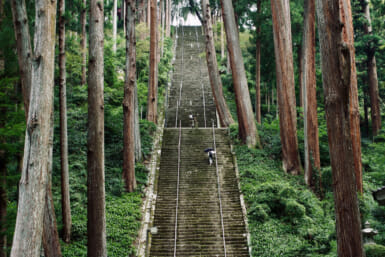There’s been much talk during the novel coronavirus pandemic about essential businesses. But the longer it has continued, the less clear-cut the definition of essential seems to be. If the businesses that hold society together – health care systems, food supply chains, law enforcement – were dismantled, humanity would be in the clutches of desperation and anarchy in pretty short order. But what about the industries that make life worth living? Are they any less essential?
Let’s take theater as an example. My parents are actors back home in Northern Ireland, and in the absence of boards to tread during the pandemic, took to their own at-home, ad-libbed performances in an attempt to maintain their sanity – or perhaps as a sign they were losing it. Here in Tokyo, actor Kyle Card tells me he’s been involved in “independent skits, videos and dramas with friends to pass the time and keep the creative and collaborative juices flowing.”
Both anecdotes reinforce the point: The theater is less an occupation, more a raison d’être. Furthermore, it provides precisely the kind of escapism we all need amid the constant news of rising death tolls and ill-conceived virus containment policies.
Yet as an industry built upon the foundations of shared human experience, live theater is in a difficult position. Close-quarters contact remains public enemy number one while actors, writers and directors across the globe are staring into an uncertain future.
Money for the Arts
Japan eased the initial coronavirus blow to its arts and culture sector, earmarking ¥55.9 billion in support, with up to ¥25 million in subsidies for streaming audience-free performances online, and ¥1.5 million handouts to small theater groups. Individual prefectures and municipalities also dug into their shallower pockets to keep their artistic ships afloat.
“What about the industries that make life worth living? Are they any less essential?”
In Kanazawa, Ishikawa Prefecture, one of the nation’s last remaining geisha strongholds, the city set aside money to support the tutelage of up to 38 maiko (trainee geisha). In Hakodate, Hokkaido, the local government financed a TV program that featured artists in need of work. In Sapporo, actors received funding for streamed online performances. Osaka, Akita and Aichi Prefectures and the cities of Fukuoka and Kobe saw similar programs and financial aid geared toward the arts.
Economic injections bode well for Japan’s performing arts future, but the explosion of theatrical creativity from all corners has left the most lasting impression.
Inspired Regional Theater
In Ishinomaki, a quiet coastal city in Miyagi Prefecture, performers have used the pandemic’s limitations as fuel for inspiration. The local theater group devised a series of short productions for audiences of one, viewed through a hole in the set wall, capturing the intimacy of live theater while aligning with social distancing measures. Running through June and July, the five- to 10-minute plays took place in a 7-meter-squared space, operating under the name, PeePing Tom.
Under the watchful gaze of Mount Fuji to the south, the annual World Theater Festival Shizuoka, slated to run through Golden Week, was canceled this year. But event organizers, the Shizuoka Performing Arts Center (SPAC), were not to be deterred, organizing up to 50 free-to-watch remote programs. In a powerful message released on SPAC’s website, artistic director Satoshi Miyagi wrote: “There are lots of people who really need theatre. Some might say we need it to enrich our lives, and some might feel like dried-out plants in need of water without theatre in their lives. […] Because of that we have always believed we must present performances even if only for one person who needs them. So now, with people isolated from others in this critical situation, we believe theatre performances are more important than ever.”
Miyagi held livestream discussions with dramatists worldwide and streamed a recording of his Buddhist adaptation of Sophocles’ classic tragedy, Antigone, from the 2017 iteration of the festival. For a limited time only, the most enthusiastic fans were able to telephone SPAC actors for one-to-one readings of theatrical pieces. All told, the online festival fetched 55,000 views; eleven-fold the number of tickets usually sold.
Innovation in the capital
There has been an equal thirst for theatrical arts in Tokyo: Chris Wells, artistic director at improv and scripted acting studio, Studio Gokko, and his husband and co-director Jun Imai, found alternate paths forward after stopping their monthly Improvizilla Show and all in-person classes.
https://www.facebook.com/tokyocomedystore/posts/3622053254512774
“Since mid-March, I’ve been teaching the Thursday night Advanced Scenic Improv Workshop via Zoom. [Jun] moved completely online in June, teaching five classes a week in Japanese to students all over Japan. Just last week, the 24 spots available for his new 1-year course sold out in under 20 minutes,” says Wells.
Canadian-born Kyle Card’s performance opportunities have also been significantly reduced since spring, sending the creator online. “I recently participated in a comedic music video with many musicians remotely and all our clips were mixed and edited into the final product. It just goes to show you that spatial limitations aren’t all that limiting,” he says.
Meanwhile, the Tokyo-based troupe, Gorch Brothers, conceptualized Theatre A/way, a peripatetic project where contained performances are delivered on the back of mobile trucks. The production company, CAT Produce, is rolling out performances of Defiled – a two-man Lee Kalcheim play where the actors never come into contact with one another – in front of small audiences at DDD Aoyama Cross Theater.
トラック一台で劇場を届ける!配達演劇「THEATRE A/way」検証プレ公演レポート
⇒https://t.co/JhnRe0QUW7#中屋敷法仁 #永島敬三 #山本タカ #コロ #配達演劇@gorch_stage pic.twitter.com/vFMTYON5CE— ローチケ演劇部 (@l_tike_stage) June 22, 2020
Even traditional Japanese theater, hardly known for its willingness to adapt to the times, embraced the digital revolution enforced by Covid-19. Kabuki great, Koushiro Matsumoto, performed an unprecedented online version of Kanadehon-chushingura, going by the decidedly less inspired sobriquet, “Zoom Kabuki.”
https://www.facebook.com/kabuki.officialpage/posts/2688441748091902
Geisha across the country have been holding live Zoom performances, including their trademark elements of dance, party games and raconteuring – albeit with computer-screen audiences.
Life as Stage
Necessity is the mother of invention and Japan’s artists have been a testament to this much-heralded proverb. But performers want the stage back. Online productions are a headache to monetize and the singular magic of a packed theater cannot be conjured into existence with a camera crew and a little digital alchemy. There has to be a route forward for the performing arts that includes stage as a medium.
Unfortunately, any immediate light at the end of the tunnel was extinguished in mid-July, when a cluster of at least 59 cases was traced back to a theater in Shinjuku. But industry groups, such as Japan Performing Arts Solidarity Network (JPASN), are brainstorming how traditional theater can exist in a socially-distanced world: plastic screens between seats, ticket-collection points, shorter programs, scrapped intervals to avoid congestion within the building, filing audience members out individually like their departing a plane, and a focus on one-person plays.
“The stage is absolutely necessary and we’ll all return to it as soon as it is safe”
But what about the actors, who need to project their voices to the audience, thrive best with a full house to play off, and often rely on physical contact? How can a character deliver a barnstorming monologue without a few errant particles of spittle drifting down to the front row? And can you picture the absurdity of a fight scene playing out between actors maintaining one-meter distances?
Wells at Studio Gokko is under no illusions about the difficulties in reviving the stage to its former glory, yet he remains upbeat about its long-term future. “The stage is absolutely necessary and we’ll all return to it as soon as it is safe… History shows us that the arts have always bounced back, and I think that a demand for all the things we’re missing now will be off the charts.”
For an insight on the future of live houses in Japan, see this article.









